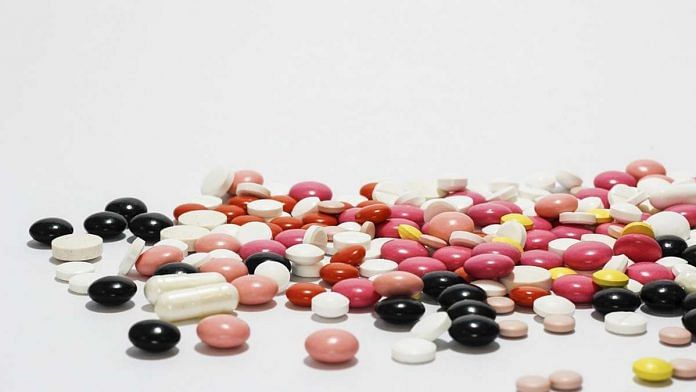New Delhi: There should be more strategic price controls on drugs that are used to treat diseases that are widespread, according to a new report by Brookings India.
The report, titled ‘Medicines in India: Accessibility, Affordability and Quality’, was released Tuesday by the non-profit policy research organisation headquartered in Washington and it examined how price regulation has evolved over the last four decades in India.
Authored by Brookings India researchers Prachi Singh, Shamika Ravi and David Dam, the report said, “Price control is a double-edged sword which should be carefully used, keeping in mind the two objectives — the growth of industry (innovation and investment) and interest of consumers.”
Currently, India controls prices of 347 drugs (with over 800 formulations) that are on the National Essential List of Medicines.
Manufacturers of the drugs in this list cannot sell them at prices above a decided ceiling price.
Between 1995 and 2012, just 74 drugs were on this list. After 2013, the number of drugs was increased to 347.
It has been debated quite a few times that price controls have hindered innovation, especially with regard to new drugs, and that it drives away foreign investment.
The report, however, stated: “Price controls are more important than ever for these essential medicines.”
According to the report, ‘these’ essential medicines are used to treat diseases that are widespread and they fall under three categories — alimentary tract and metabolism, cardiovascular system and respiratory system.
“… the debate should turn towards what the future of price controls should look like. The question of which drugs should be covered and which should be left out is one that needs serious thought, and the government should prioritise how to achieve this balance,” it added.
Also read: India’s price control policy has destroyed drug manufacturers. This is how they can be saved
Regulate important drugs
The Drug Pricing Control Order (DPCO), under which the government regulates the prices of drugs, includes general drugs more than the ones that are necessary, the report stated.
It said there is an increase in the number of drugs that are under regulation in therapeutic classes, especially drugs used to treat cardiovascular and respiratory diseases.
Therapeutic classes are a way of classifying drugs according to their functions.
The report said in the past two decades, India’s disease burden has shifted towards non-communicable diseases such as cardiovascular and respiratory illnesses and towards lifestyle diseases such as diabetes.
For instance, the number of deaths attributed to diseases that are categorised under ‘Cardiovascular System’ has risen, and make up the biggest cause of death in 2017.
“Other diseases on the rise are those related to the alimentary tract and metabolism such as diabetes and those related to the respiratory system,” the report added.
However, the proportion of the drugs in the therapeutic classes have remained the same, or even decreased in the case of “alimentary tract and metabolism”, according to the report.
“This could suggest that the DPCOs are incorporating more drugs in general, but more of these drugs belong to other therapeutic classes that are not as much of a burden as those listed here. Ideally, the DPCOs should focus more on diseases that have a higher burden on society,” the report said.
Cases of spurious drugs in India
Various sources estimate the proportion of fake/substandard/spurious drugs in India in recent years to be around 3 per cent to 4 per cent, the report said.
It pointed out two major regulatory issues within the Indian pharmaceutical industry — state-level inspections and discrepancies in distributing licences for manufacturing.
“Research in this domain has found that Indian pharmaceutical firms present a pattern of differentiating drug quality depending on the final destination (internationally).”
“Places with underdeveloped regulatory oversight structures were more likely to receive substandard products. Whether this pattern holds true domestically as well needs additional investigation, but this points to a need for rigorous quality inspections in states where sampling numbers are low and the proportion of such drugs is high (such as the Northeastern states),” the report added.
Also read: Indian drugmakers aren’t losing sleep despite getting a record 23 warnings from US FDA






